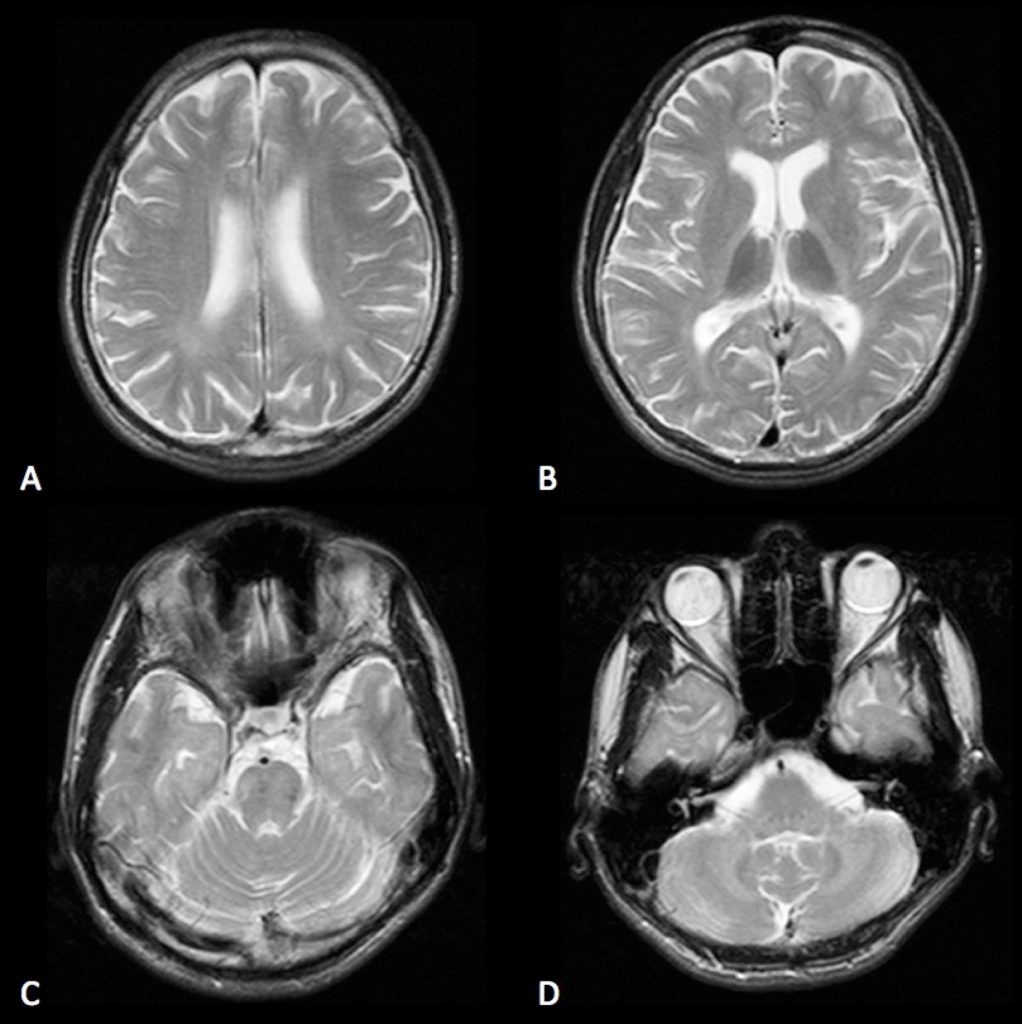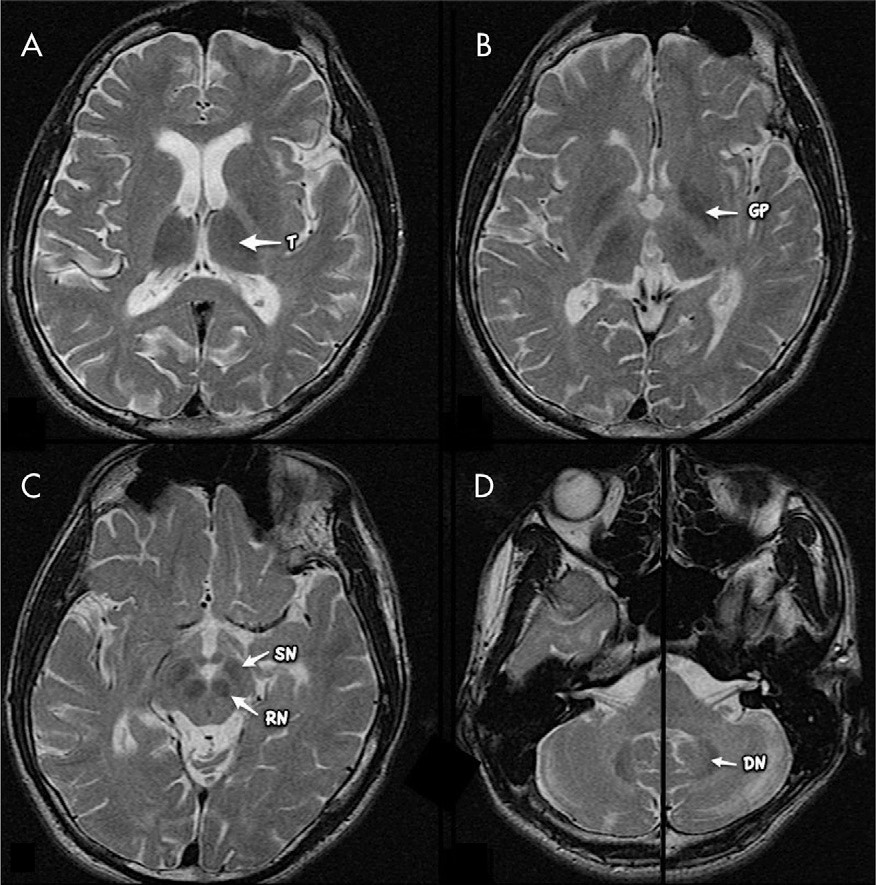Case contribution: Dr Norzaini Rose Mohd Zain
Clinical:
- A 22-year old man
- A 9-year history of glue-sniffing that evolved into a full-blown picture of psychological dependency that was characterized by craving and tolerance, episodes of psychosis during intoxication which was subsequently followed by agitation, irritability and physical struggle.
- It gradually ended with period of low mood, lack of motivation, and social withdrawal.
- After 6 years of chronic glue- sniffing, there was an insidious onset of bilateral, low frequency intention tremors involving the upper limbs that gradually worsened and was accompanied by unstable gait, stuttering of speech and blurring of vision.


Imaging findings:
- Magnetic resonance imaging (MRI) of the brain demonstrated extensive increased T2 signal in the white matter extending from the centrum semiovale, down the posterior limb of the internal capsule, and through the anterolateral pons, as well as the white matter of the cerebellar hemispheres (Figure 1 A- D).
- Low signal is seen in the deep gray-matter structures, particularly involving the thalami, globus pallidi, and dentate nuclei, as well as the red nuclei and substantia nigra (Figure 2).
- Widespread cerebral and cerebellar volume loss is also present, with marked thinning of the corpus callosum, without T2 signal change.
Diagnosis: Chronic Toluene-induced encephalopathy
Discussion:
- Imaging in acute toluene abuse is usually normal.
- Prolonged and heavy exposure to inhalants however may attribute to peripheral neuropathy, cerebellar dysfunction, cranial nerve damage, cortical atrophy, encephalopathy, and dementia.
- N-hexane and toluene adhere to lipid-laden myelin sheaths and neuronal membranes to start the demyelinating process in the white matter as well as causing iron deposition in the thalami and basal ganglia.
- Cerebellar damage due to toluene commonly presents with tremors and ataxia, which correlate to the extent of sulci enlargement.

Recent Comments